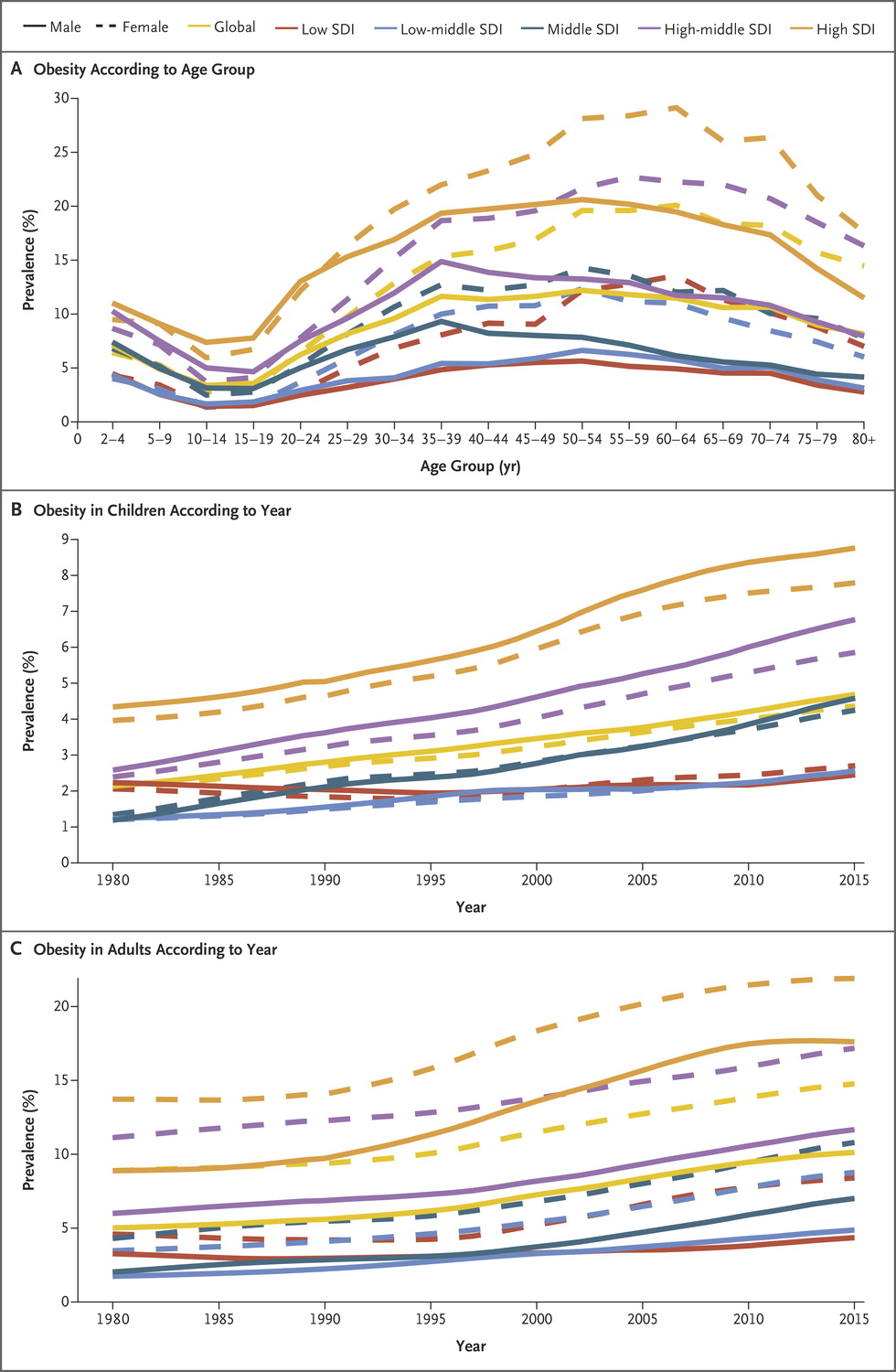Study finds one third of the world overweight

Globally around 2.2 billion adults and children were obese or overweight in 2015
(Web Desk) - One third of the world’s population is overweight fueled by urbanisation, poor diet and reduced physical activities, a new study reports.
Globally around 2.2 billion adults and children were obese or overweight in 2015, suffering from health problems related to their weight, reports CNN.
Out of 195 countries, the United States has the greatest percentage in both adults and children while Egypt led in terms of adult obesity with almost 35%, according to the study published by New England Journal of Medicine.
The study also indicated that the deaths occurring due to health problems associated with obesity included cardiovascular diseases, later stages of diabetes and kidney diseases.
Difference between obesity and overweight:
Body Mass Index or (BMI) is the ratio between a person’s weight and height. A BMI of 25 to 29.9 is overweight. But if anyone has a BMI that is over 30, he is considered obese. Four million people are dying due to their higher BMI.
Director of the Institute for Health Metrics and Evaluation at the University of Washington, who worked on the study, Dr. Christopher Murray says, "People who shrug off weight gain do so at their own risk -- risk of cardiovascular disease, diabetes, cancer, and other life-threatening conditions.”
"Those half-serious New Year s resolutions to lose weight should become year-round commitments to lose weight and prevent future weight gain," he adds.
Analysis on the global obesity:
Data of 68.5 million people was analysed from the year 1980 to 2015 to search for the figures and differences occurring during this time period.
The collected data indicated that the number of people affected by obesity has doubled since 1980 in 73 countries and continues to increase in many countries.
According to their analysis, women were more obese in ratio than men in all age groups, which correlate with the previous findings on obesity.
 Prevalence of Obesity at the Global Level, according to Sociodemographic Index (SDI). Photo Credits: The New England Journal of Medicine.
Prevalence of Obesity at the Global Level, according to Sociodemographic Index (SDI). Photo Credits: The New England Journal of Medicine.
Obese Children:
The study also focused on the increasing percentages of children who were obese. Although their percentages were lower than adults, their numbers indicated a drastic increase signifying more risks and diseases if nothing is done to control the problem. According to the findings of the study, China and India had the highest number of obese children with 15.3 million and 14.4 million, respectively.
.jpg) Children exercising during weight loss summer camp in China. Photo credit: Reuters
Children exercising during weight loss summer camp in China. Photo credit: Reuters
Adults:
United States followed by China had the greatest number of obese adults, with 79.4 million in USA and 57.3 million in China. Bangladesh and Vietnam at 1%, had the lowest number of obese adults, according to the study.
Goodarz Danaei, Assistant Professor at the Harvard T.H. Chan School of Public Health showed concerns by stating that, "This re-emphasizes what we already know about the obesity epidemic. But it raises the alarm that we may be facing a wave of obesity in the coming years across high and low income countries.”
Since the growing epidemic of obesity among adult populations has increased, in US population, the greatest challenge is the increasing number of young obese children that have been already exposed to the high BMI ratio for a longer period of time, which could be challenging to the researchers, Danaei indicates.
Despite growing obesity around the world, researchers are hoping to raise more awareness of the diseases linked to being overweight that can prove fatal.
Owing to the differences in the income level around the world, obesity levels have increased with time. According to the authors of the study the issue isn’t the wealth.
"Changes in the food environment and food systems are probably major drivers," they write. "Increased availability, accessibility, and affordability of energy dense foods, along with intense marketing of such foods, could explain excess energy intake and weight gain among different populations."
They add that reduced levels and opportunities for physical activity that came with increased urbanisation are also potential causes, but add that these are "unlikely to be major contributors."


